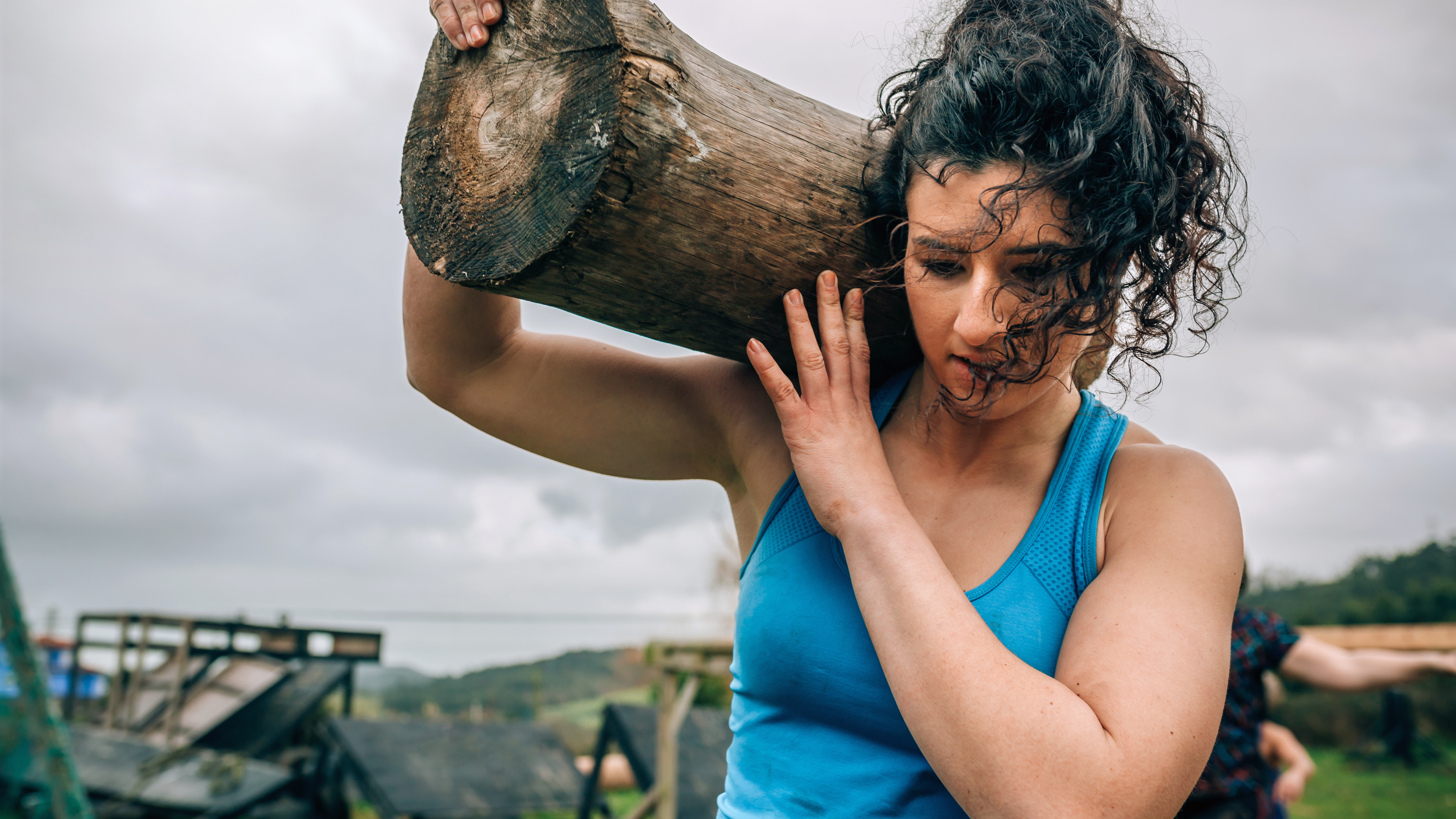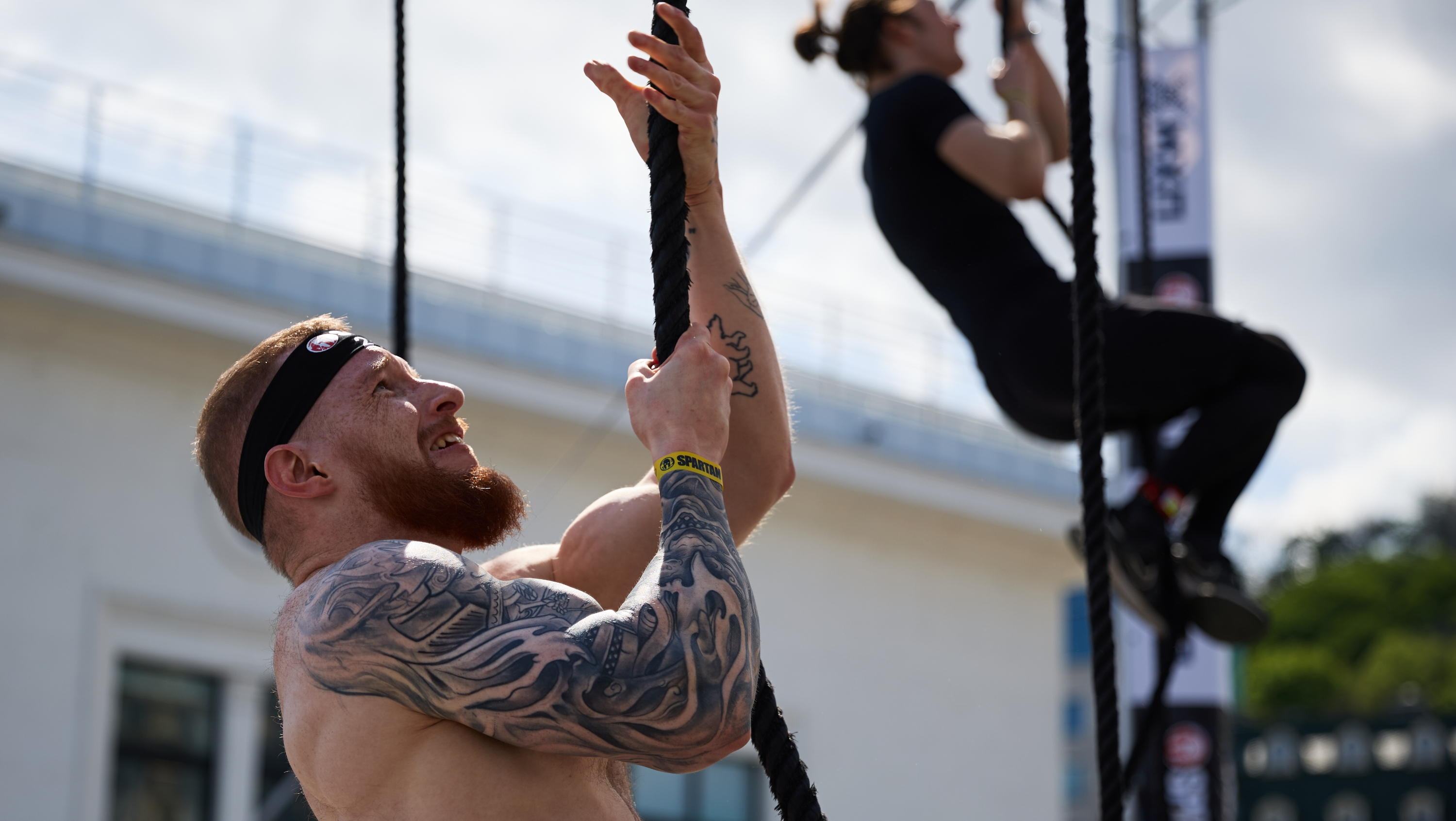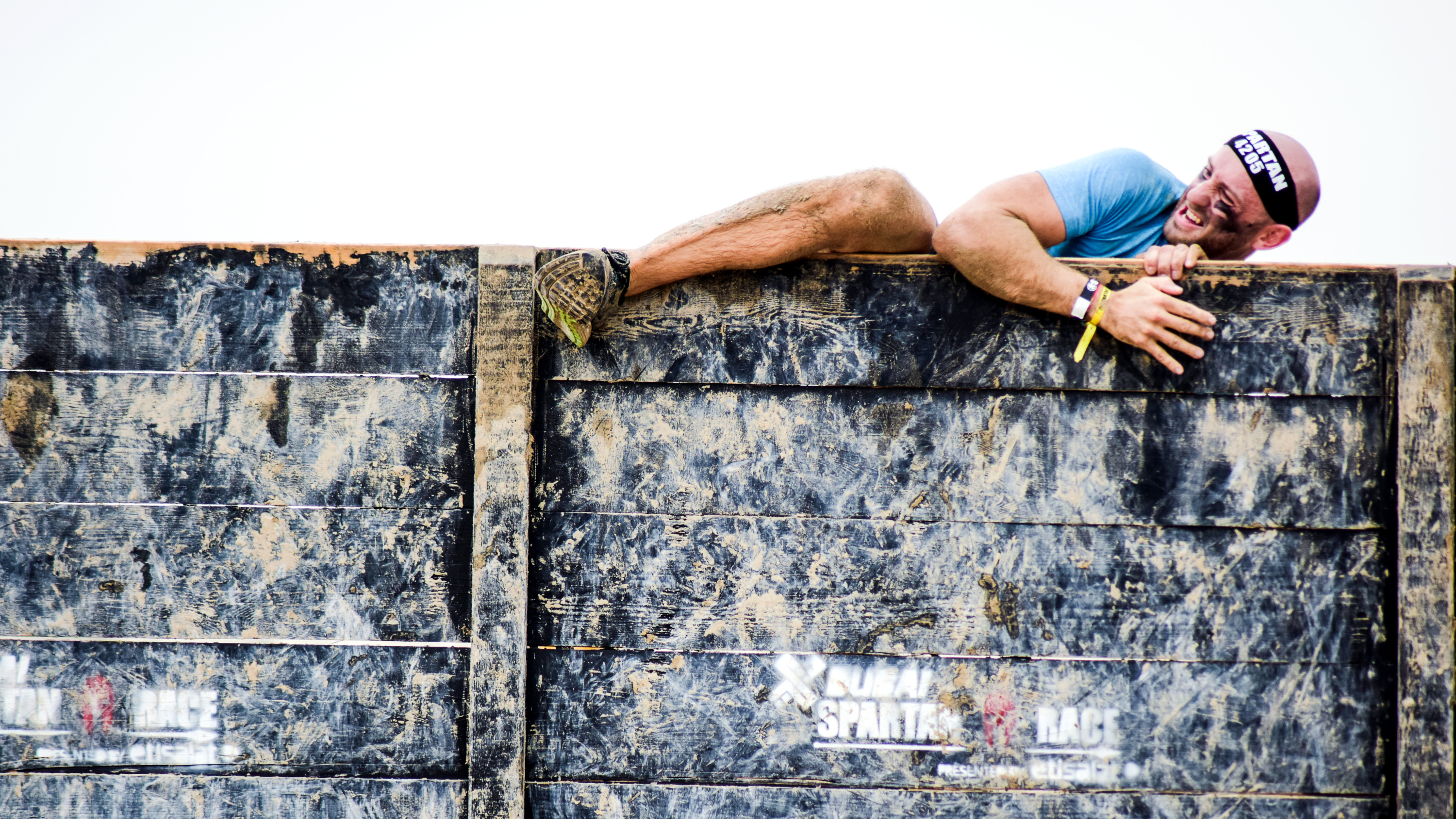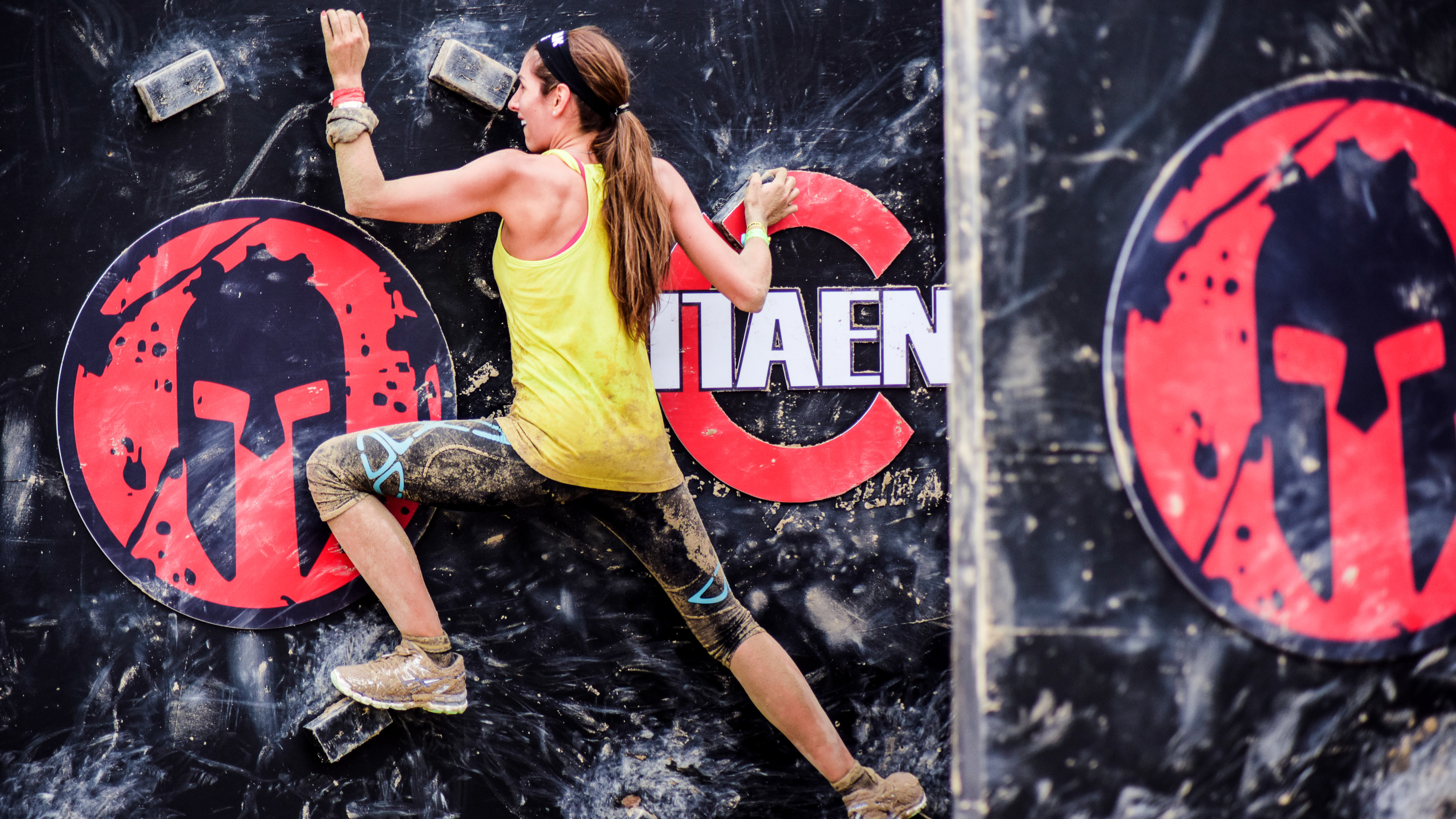I did a Spartan Race untrained — 5 things I’d do differently after talking to the elites
I thought my regular workouts would be enough — I was wrong.

A few months ago, if someone had told me I’d be swimming through the sea with a log, hauling sandbags through castle ruins, tackling monkey bars, climbing tall wooden frames without a harness, throwing a spear, and logging it under "Obstacle Race" on my best Garmin watch, I’d have laughed. No chance.
This is exactly what a Spartan Race throws at you. Inspired by military-style training, it mixes running, climbing, crawling, and carrying into one event designed to test your strength, endurance and mental grit.
When I told my brother-in-law, who is ex-military and the ultimate Spartan fan, that I’d signed up to do the 5K sprint race in Croatia, he was instantly jealous. He rattled off the names of his favorite Spartan elite athletes and offered some genuinely helpful tips, like building grip strength to prepare for the obstacles.
I listened politely but naively didn’t put his advice into practice, assuming my baseline running fitness would be enough. Turns out, what I thought would be a simple race turned into a full-body challenge at every turn.
What does a Spartan Race involve?
I took part in the Spartan 5K Sprint in Hvar, Croatia, which packed a lot more than its name suggests.
The race mixed running with obstacles, including sea swims, climbing walls, hauling sandbags and logs, monkey bars, rope climbs, A-frame climbs, swimming with a log and a spear throw. Fail an obstacle, and you face a penalty like lugging chains or doing burpees. Every Spartan course is different, with some adding cargo nets, slip walls, tire flips, or barbed wire crawls.
Going in untrained, I had an absolute blast, but my weaknesses were obvious on the hanging and pulling obstacles. I didn’t even make it halfway up the rope climb, which forces you to lift your own body weight with just your arms and grip while controlling the descent, really testing forearms and upper-body strength.
Get instant access to breaking news, the hottest reviews, great deals and helpful tips.
The monkey bars were equally tricky, demanding a mix of grip and technique to swing from bar to bar without losing momentum.

The swims were short, but if your course includes sea crossings, make sure you’re comfortable in open water. Whether you’re swimming or not, I’d definitely recommend wearing a pair of the best trail running shoes. They’re lightweight, provide great grip, and handle water well, which makes them perfect for a Spartan race.
Built for muddy, wet, and uneven terrain, this trail shoe keeps your footing secure. Lightweight, durable and ready for obstacles, it’s a solid choice for your first Spartan race.
Let's get to the crux of things: would I recommend doing a Spartan race untrained? No. Even if you are a strong runner or swimmer, the obstacles will quickly expose weaknesses in upper-body and grip strength, and if you are strong with weights and functional training, the running sections will challenge your endurance.
To better prepare for my next race, I spoke with some of the Spartan elite athletes for their go-to training advice.
How to train for your first Spartan Race, according to the elites

Of course, most of us don’t have ropes dangling from our ceilings, A-frames in the backyard, or spears to throw, but neither do the elite Spartan athletes. Training is really about building a strong foundation: running fitness, functional strength, grip and upper-body power, and the ability to carry weight efficiently. As you'll find from the tips below.
1. Start with a solid foundation
Before stressing about the obstacles you'll face on the day, focus on general strength and endurance. “Strength training gives a good base for all the other types of training, so starting there would be great,” says Spartan World Champion Tianna Webberley.
“Then joining a climbing gym or playing around at a park can help with parkour or obstacle-type training for the everyday person.”

2. Mix running and strength work
Four-time Spartan World Champion Richard Hynek swears by hybrid training. “I often combine intervals on trails or treadmill runs with exercises like burpees, carries, or pull-ups,” he says.
“Every day athletes can apply the same principle by adding short strength blocks into their runs. For example, stop after every kilometer to do 10 burpees or 15 squats.”
3. Develop grip and explosiveness
Rope climbs, monkey bars and walls all demand upper-body power. “Plyometrics have been a favorite of mine for explosiveness and getting on and off obstacles quickly,” says Webberley. Try adding farmer’s carries, pull-ups, or hanging holds to your training to build grip and control.

4. Try to mimic race conditions
Spartan races throw you from running to climbing to carrying heavy stuff in quick succession. “The principle of running in and out of obstacles or running while fatigued is what makes Spartan so hard,” says OCR World Champion Stijn Lagrand. He suggests mixing running, obstacle practice and carries in your training so your body gets used to the way the race flows.
5. Recover well and prepare smart
The pros are unanimous: recovery is as important as training. “Sleep is definitely my number one recovery tool,” says Hynek, who also focuses on hydration, mobility and real food after a race. Lagrand adds, “Try to rest mentally too. Doing as little as possible with a relaxed state of mind is truly the fastest and best way to recover.”

8× American Ninja Warrior athlete and professional stunt performer. 2024 Spartan Hvar World Champion, OCR World Championships 2024 runner-up, and World Obstacle Costa Rica bronze medallist.

Elite athlete from the Czech Republic with over 110 Spartan Races worldwide. Three-time European Champion, three-time World Championship silver medallist, and winner of the toughest Spartan Race in history.

Dutch OCR athlete and former student turned full-time racer. 4× European Champion, 2× World Champion, and 2024 Spartan Sprint World Champion.
Follow Tom's Guide on Google News, or add us as a preferred source, to get our up-to-date news, analysis, and reviews in your feeds. Make sure to click the Follow button!
More from Tom's Guide
- Thinking of using ChatGPT to build your next workout plan? Read this first
- You only need 5 minutes to strengthen your mind — here’s how, according to a sports psychologist
- This workout skips the squats and saves your knees: Here’s a trainer’s 6-move chair routine for building stronger legs over 55

Jessica has been a fitness writer at Tom’s Guide since 2023, bringing three years of experience writing about health, fitness, and the great outdoors. Her passion for exercise began during her childhood, where she spent weekends hiking and competing in local athletics club events. After earning a master’s degree in journalism from Cardiff University, Jessica found the perfect way to combine her love of storytelling and fitness into a career.
Jessica is passionate about testing fitness gear and tech, using her reviews to help readers make informed buying decisions. She ran her first marathon in April 2024, finishing it in 3 hours and 48 minutes. Through her training, she’s developed a deep understanding of what it takes to grow as a runner, from effective workouts and recovery techniques to selecting the right gear for every challenge.
When she’s not at her desk, Jessica enjoys spending time in the kitchen crafting new recipes, braving cold water swims and hiking.
You must confirm your public display name before commenting
Please logout and then login again, you will then be prompted to enter your display name.

